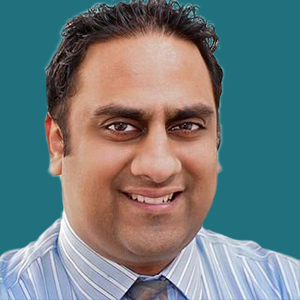Evaluating Zamto-Cel in R/R DLBCL
Nirav Shah, MD, an associate professor of medicine at Medical College of Wisconsin, discussed efficacy data presented at the 2025 Tandem Meetings.
Nirav Shah, MD

At the 2025 Tandem Meetings |Transplantation & Cellular Therapy Meetings of ASTCT and CIBMTR, held in Honolulu, Hawaii, February 12 to 15, 2025, interim data were presented from the phase 2 DALY II USA clinical trial (NCT04792489), which is evaluating zamtocabtagene autoleucel (zamto-cel; MB-CART2019.1), a dual CD19- and CD20-directed noncryopreserved chimeric antigen receptor T-cell (CAR-T) therapy, for the treatment of relapsed/refractory diffuse large B-cell lymphoma (DLBCL). CGTLive®'s sister site OncLive®, spoke with Nirav Shah, MD, MSHP, an associate professor of medicine at Medical College of Wisconsin, during the meeting about the findings presented.
Shah gave some background about the treated patients included in the efficacy analysis, pointing out that many of these patients had elevated International Prognostic Index (IPI) scores and lactate dehydrogenase (LDH) levels at enrollment, indicating high-risk disease. He then went over the key results, highlighting that the overall response rate (ORR) was 72.8%, with a complete remission (CR) rate of 50.8%, despite the prognostic factors.
CGTLive: Can you discuss the efficacy results presented from the DALY II USA Trial?
Nirav Shah, MD: Quickly, just to highlight the patient population, we're looking at a core population of evaluable patients, which was 59 patients. They had a median age of 65 years and many of them were high-risk patients—so the majority had a high IPI score at the time of enrollment and, again, the majority also had elevated LDH. These are just biomarkers of difficult to treat disease.
Despite some of these core prognostic indicators, we were happy to report that the ORR was approximately 73%, with 51% of patients achieving a CR. In terms of durability, many of these remissions were durable. We were reporting a 6 month progression-free survival of 55%. We obviously need to continue to follow these patients so we get more mature data, and then hope at a future time point to report 1 and 2 year outcomes, as well. And again, this is an interim analysis of this study population.
The median duration of response was 11.4 months and for complete responder patients, the median duration of response was not reached. Then for the entire population, median overall survival was not reached, regardless of response—so that's good to know that patients are still alive, even among those patients that may have relapsed.
This transcript has been edited for clarity.